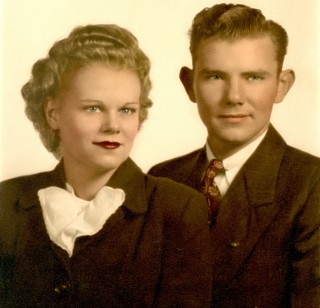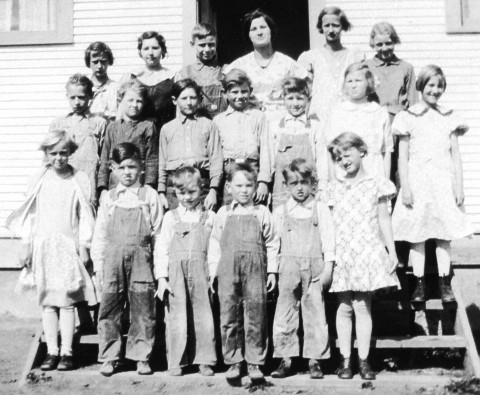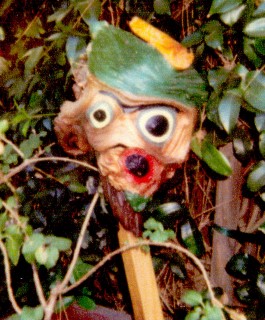
Bio by Norman Rudnick
I was born October 26, 1923 in Lincoln Township about nine miles northwest of Audubon and five miles southwest of Gray on a small farm now owned by Amos Asmus, I believe. My father was Gus Rudnick, son of Otto and Marie (Mary) Rudnick who had a farm a quarter of a mile east of Trinity Lutheran Church, where l and many of my Rudnick relatives have been baptized and confirmed.


After my grandmother's death in 1945, my uncle Oscar Rudnick along with my
Aunt Dorothy maintained the farm until the early 1970's when the farm was sold and my
Uncle and Aunt moved to Milford, Iowa (I still have a copy of the flyer announcing the sale
of the farm).

My mother Heda (Hedwig) Lauer was from Reinbeck, Iowa. After a year's sojourn in Hampton, Iowa, in 1926-27, where my father had gone as an apprentice mechanic to learn the automotive trade, we moved back to a farm a mile west of the Asmus place and a mile and half south of Trinity Lutheran Church. We lived there until 1942 when we moved to my Grandmother's second farm two miles west of Gray. My grandfather had died in 1922. Manning then became a major shopping area for my parents. The Eddie Dammann's, parents of Edna, who married my brother Reinhardt, lived over the hill just west of us.

Shortly after my grandmother Rudnick's death, they purchased a small farm about four miles west of Audubon. When they retired in the early 1970's they moved to a residence on May Street in Manning, where they lived until both passed away, my mother in 1979 and my father three years later. At that time my Aunt Katherine Rudnick, wife of John Rudnick, and their daughter Lavonne also had a residence in Manning.
Except for the second and third grade when my brother Reinhardt and I were enrolled in Trinity Lutheran's parochial school, I attended rural school Lincoln#7, along with the children of Henry and Bill Asmus.

On graduating rural school in 1937, I walked a mile and a half to the corner of Lutheran Trinity Church, where a school bus took me and other farm children into Gray High School. I remember the thrill I had when I could stay in town overnight because of bad winter weather. My Uncle Herbert Rudnick had one of the two garages in Gray, both now long since gone. Uncle Herbert' garage was on the west end of town. (His daughter, my cousin Wanda Mathisen from his second marriage and her husband Don now live in Crescent City just outside Council Bluffs. Don also has strong ties to the Manning and Carroll area). I stayed at his house just a short half block down from the high school. In the late winter of 1938, I was one of two students to contract small pox and almost died, according to my parents, Pastor Otto of Trinity Lutheran, and Dr. Jensen of Audubon.. Rose Davis, a sophomore then, was the other person in the school to survive the usually fatal disease. The year before double pneumonia had almost carried me off.
The next year, partially as result of transportation problems, I transferred to Audubon High School and graduated from there in 1942. Totally unfit for farming and the Armed Services as a result of a birth defect which University of Iowa doctors later identified as congenital dysplasia of the cervical cord which affected my hands—I can not milk a cow, harness a horse, shuck corn, nor salute properly--I decided to go to college and worked my way through the University of Iowa at many menial jobs, including racking pool balls in Des Moines, a clean-up boy in a Chicago hospital, and bell hop in the Old Fontenelle Hotel in Omaha. I earned a B. A. and M. Ain English. Fortunately, the University paid half my tuition while an undergraduate.
After obtaining my M. A. but totally broke, I migrated to San Francisco, where I got employment as a bus boy in the old Foster Cafeteria system. While thus employed, I wandered the City's streets and met many people and had various experiences which served me in good stead when I decided to write what became my first published novel: The Murder of Eleanor Lindquist*. After several years, I decided to take the advice of the doctors who had diagnosed my disability and got a teaching credential and then a teaching position in Northern California at a government depot called Herlong, some fifty miles north of Reno and just on the Nevada-California border. It was here I met my wife Joann, who had come there at Christmas vacation time from San Francisco to visit her sister and brother-in-law, who were also teaching there. Our first date was a fifty mile drive into Reno in snowy stormy weather in a huge four-porthole Buick I had purchased from a desperate salesperson a year before in San Francisco. We were married that September. Five years and two daughters later, we were back in the Bay Area, where I had found a position in Miramonte High in Orinda, a suburb in the Bay Area. I taught there for twenty-seven years, the last twenty as department chairperson of the English Department. I thoroughly enjoyed the profession of teaching and my years at the high schools where I taught. My wife and I still go to reunions of the Herlong High student body. The last was in May 2004 in Reno, of course. During the summers, I taught a six weeks summer session and also played on a recreational slow-pitch softball team as a pitcher. Through the years I had learned how to cope reasonably well with my disability. I retired in 1988 from teaching and in 1993 from softball. In 1981 Macmillen, Inc. published a series of high school English texts, Grammar and Writing, for which I was a consultant and author of various chapters. My first novel I have already mentioned. The material on the Adventurer of Rachel and the Goblin is given below.
A copy of the novel The Murder of Eleanor Lindquist is now housed permanently in the University of Iowa's Iowa Authors Collection library, courtesy of Sydney F. Huttner, Head of Special Collections. There it resides along side the works of such luminaries as Hamlin Garland, Wallace Stegnar, and Carolyne Keene, even ex-President Herbert Hoover. I hope that a copy of The Adventures of Rachel and the Goblin will soon join it.


About twenty years ago my brother-in-law, Lanny Collier, gave me a
peculiarly shaped burl he had found on his and my sister Marilyn's property in North
Bend, Washington. It had uncanny human-like feature--two large circles set close to each
other, a small ridge just below them and another large circle just below the ridge. Above
the top circles was a small space and then an upswept wave. For years that strange effigy
lay in a corner of my workshop. Finally, no longer able to withstand the stare of those
"eyes" I cleaned the burl, trimmed and sanded it and suddenly realized I was looking at
the face of a real, probably ensorcelled, goblin. I then painted and shellacked it and placed
the head on a stick and stuck it my garden to protect my plants from marauders. When I
told a writer friend of this, she said "There must be a story in all that." And that is the origin
of tale of Rachel and her goblin friend, Gobby.
Below is a photo of the goblin in his original enchanted condition. He now guards my
daughter's flower plants in San Jose.

Another tie to Manning: My brother and I used to pal around with Harold Ruhde when he
worked for Clarence David 1939-41.
Harold was a fantastic roller skater.